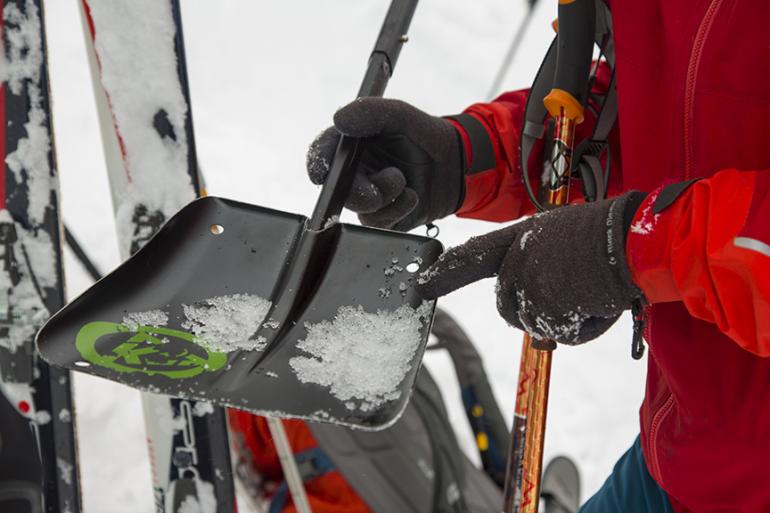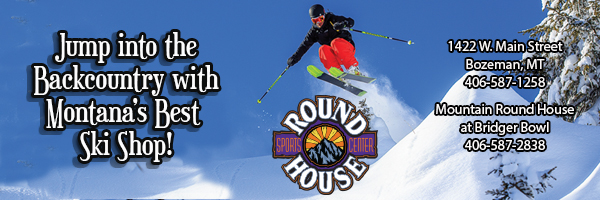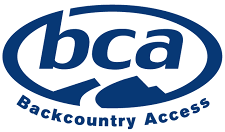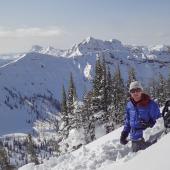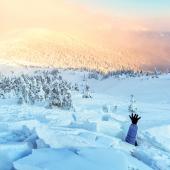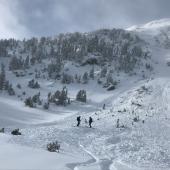Ski Safety
My Alpine Education, Part 4: Avalanche Literacy.
Editor’s note: This is part four of a six-part series on learning about avalanches and how to keep oneself—and one’s partners—safe while ski-touring in the backcountry. Read part three here.
The weather is mild and breezy at 7am as I drive the highway to Harrison, to meet my classmates and the instructors from Big Sky Backcountry Guides, for a three-day Level 1 Avalanche course. It’s late January, before winter decided to come back, and these high winds and warm temps are either going to make for really awful training conditions or really great training conditions. We’ll just have to wait and see.
From Harrison we head to Potosi Campground and gear up. We double-check our gear: beacons, shovels, probes, and a fresh pair of undies at bare minimum. We’re staying in close quarters up at the Bell Lake Yurt, high in the Tobacco Roots, so keeping the grungy skier ripeness to a minimum is highly encouraged.
From here the guides shuttle our group six miles in on snowmobiles, where we skin up and perform our first beacon check on flat ground. From here we make the two-and-a-half mile trek to the yurt, stopping periodically to discuss slope angle and changing weather. We experience every Montana season during the next three hours of skinning. It rains, it snows, the sun comes out, and the wind blows. As amateur students, this keeps us on our toes.
At the yurt, it’s first things first: we must know how to perform a rescue search in the event of an avalanche. How many of us have really practiced with our beacons? Yes, we’ve all put it in search mode, moved around from side to side till the beeping sped up, and “rescued” a friend in the parking lot. Or maybe we’ve stopped by the beacon park for some practice. But out in the backcountry with real snow and limited first aid, our skills are clearly wanting.
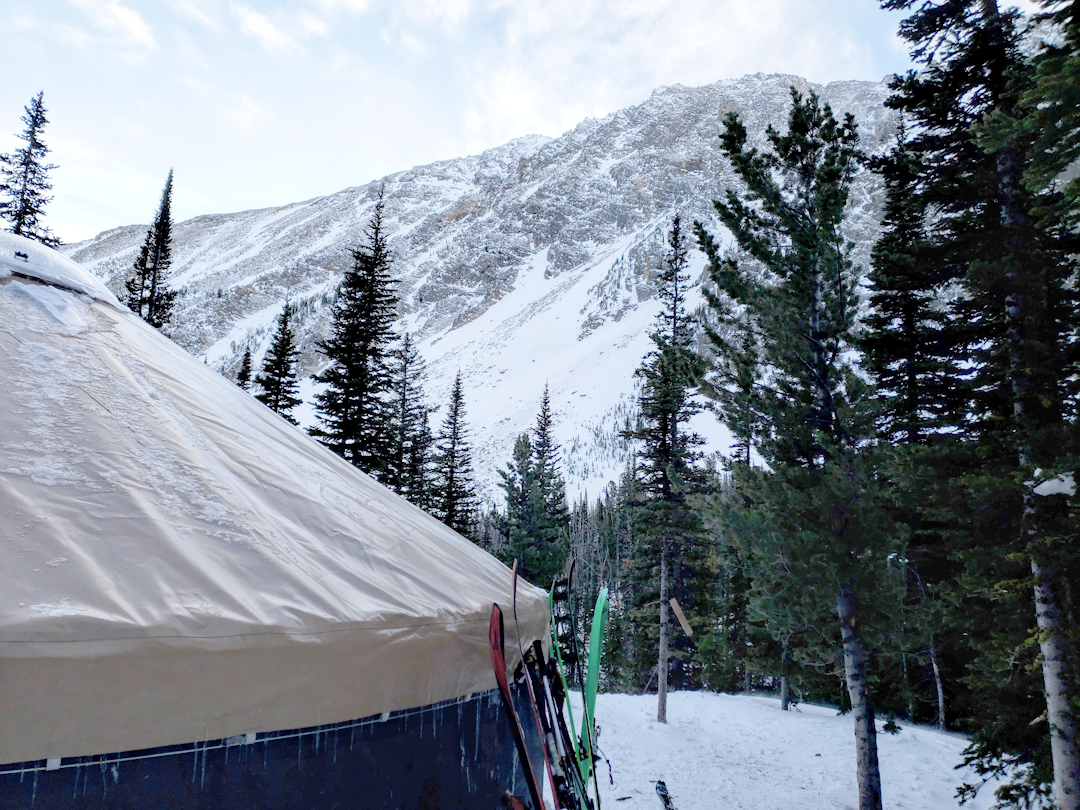
The guides hide beacons in packs every 20 to 50 meters around the yurt and set up the scenario: “There’s been an avalanche,” they say. “Everyone in your group stayed clear, but there was another group skinning above you that triggered it. You don’t know how many were in their group or if they all have beacons. Go.”
The chaos of this situation can be broken down into three steps: run, walk, crawl. First we must move fast, running to get a reading on the beacon. Next we must slow down and carefully walk in the direction our devices indicate. Then, when we’re within five meters, it’s time to crawl. Getting on our hands and knees brings us closer to the person in the snow and gives us the most accurate location to start probing and digging.
![]()
We’re told that the survival rate is around 80% if someone is found within the first 10 minutes, but after another two minutes the survival rate decreases to 40%. So it’s incredibly important that we act quickly and accurately. We struggle, we flounder, and eventually we succeed. All of which make it clear that practicing several different scenarios and being prepared to perform a proper rescue in each one is critical—but given the short rescue window, even more important is avoiding an avalanche altogether. And that, of course, is why we’re all here. As the sun goes down, we head back to the yurt to soak in all the knowledge the guides have imparted about weather, terrain, and snowpack.
The next morning starts with piles of bacon, coffee, and a discussion of everything snowpack. Several factors go into snowpack stability: wind, sun, temperature, and precipitation all play a role in creating strong or weak layers. We learn that the deadliest weak layer found in the intermountain climate of southwest Montana is a persistent slab. And yes, it’s as terrifying as it sounds. Persistent slabs can be hard to evaluate and can trigger huge avalanches. They are often buried deep in the snowpack and can be widespread across the terrain.
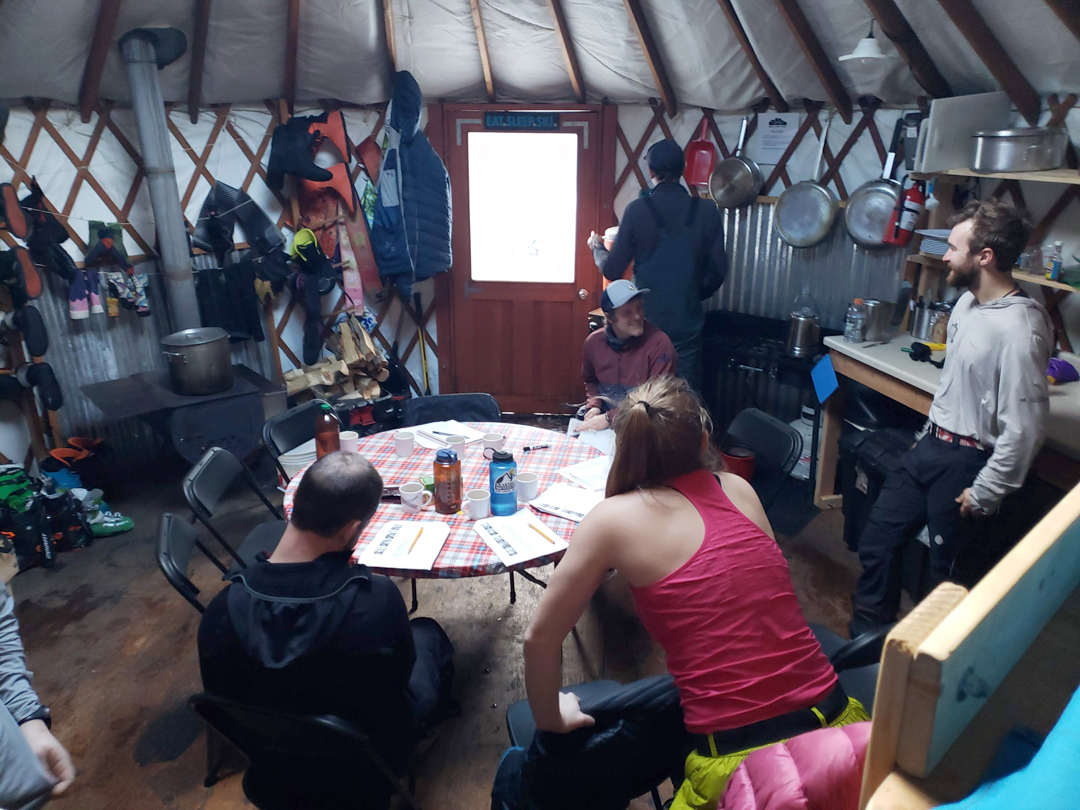
As we move outside for some hands-on snowpack study, the sun and wind battle for our attention. I throw on every layer I have because the wind seems like it is out to keep things interesting. As we skin up to Bell Lake, my curiosity drifts to the endless array of possibilities. There are open chutes, tight tree runs, and fluffy meadows, all untracked. I’m quickly jolted back to reality when the guides point out a large natural slide that happened a few days prior in an open field above the lake. We spend the afternoon in the howling wind digging pits and investigating the snow beneath us.
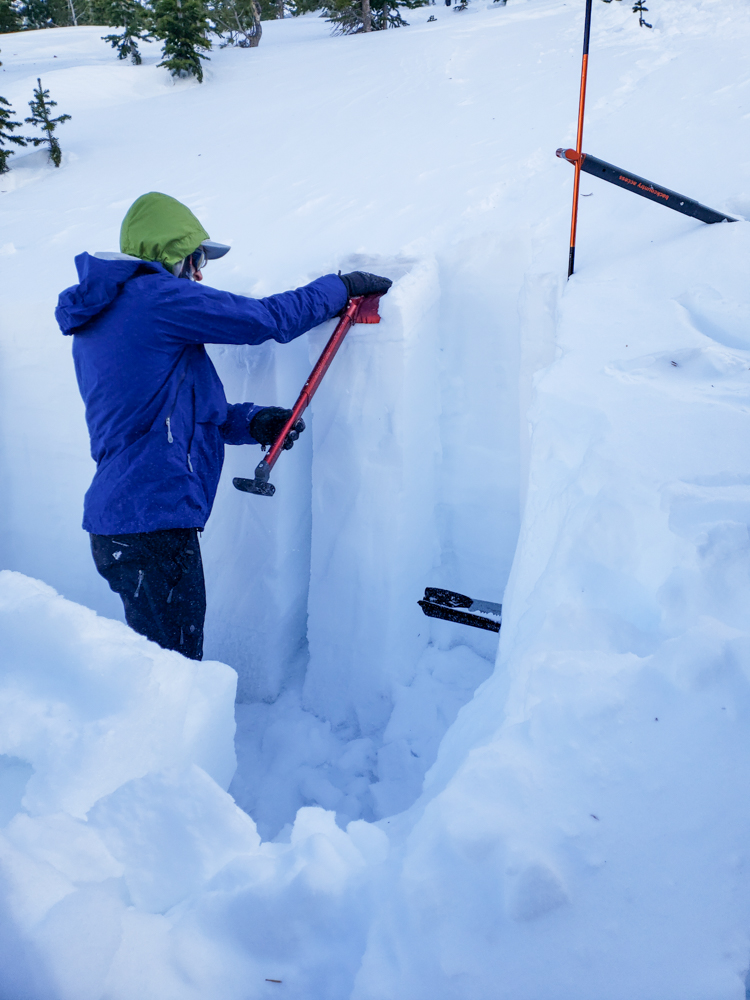
The major—and majorly disconcerting—takeaway is that pits offer only so much information. They’re helpful in finding the different layers in the snow, but each pit is just one part of a, well, multifaceted equation. The snowpack can change across terrain, and different terrain angles and shapes determine how the snow behaves. Don’t get me wrong: every backcountry traveler should know how to dig a pit and perform stability tests; however, this information should be used along with other observations to fully understand the conditions.
After a day filled with science and technique, it’s time to switch gears and discuss the far-less-concrete human factors that play a role in avalanche safety. Over a big plate of spaghetti and garlic bread, we discuss problematic phenomena such as “expert halos,” “social facilitations,” and “prior commitments.” An example: “I made plans to ski Saddle Peak; I told several folks about it, and don’t want to go back on my word.” And, “It appears unsafe, but I don’t want to seem fearful in front of my friends, so I’m going to support their decision to ski.” These types of thought patterns can be fatal. It’s important to study the terrain, objectively evaluate the risk, and trust your gut—and always, always err on the side of caution.
After another quiet night in the high country, day three arrives—and it’s time to go skiing! We’ve been sponges the last two days, soaking up all the information thrown our way. Now it’s time to put this knowledge to the test. The wind has died down and snow begins to fall. It looks like we might actually get some of those turns I daydreamed about the day before.
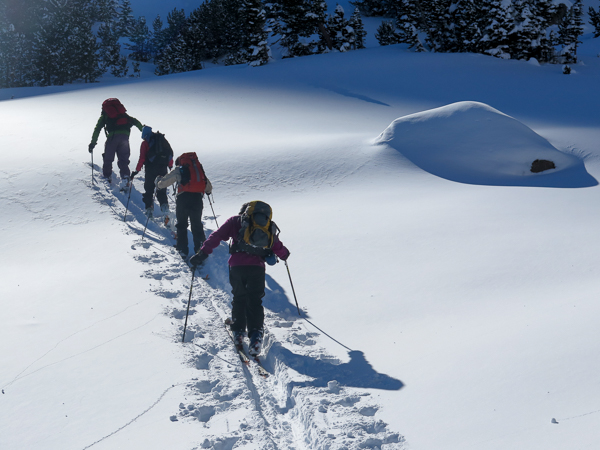
We do some role-playing, to put our knowledge into action: the students plan a tour for the guides. Our plan is to minimize exposure to wind-loaded slopes and stick to relatively moderate terrain. This means staying in the trees and skiing slopes at no more than a 30-degree incline. We’re all a little giddy, as the six inches of new snow is really going to bring the whole weekend together. New conditions, different temperatures, unknown terrain, and an itch to get some turns—the science, the technique, and the human factor are all converging nicely. We travel in the least-exposed terrain, one at a time when needed, and stop to continuously gather information all the way to the top of a big, bald peak above Bell Lake.
We rip off our skins while a few people dig a pit. All looks good—time to drop in. The snow is perfect. The clean mountain air, a new layer of untracked cold smoke… these fresh lines in the backcountry bring a different amount of elation than can ever be found resort skiing. And when the turns come from carefully-thought-out plans and sound decisions, each one is that much more rewarding. As we hoot and holler back to the yurt, everyone seems to feel the same joy from our safe and well-earned turns.
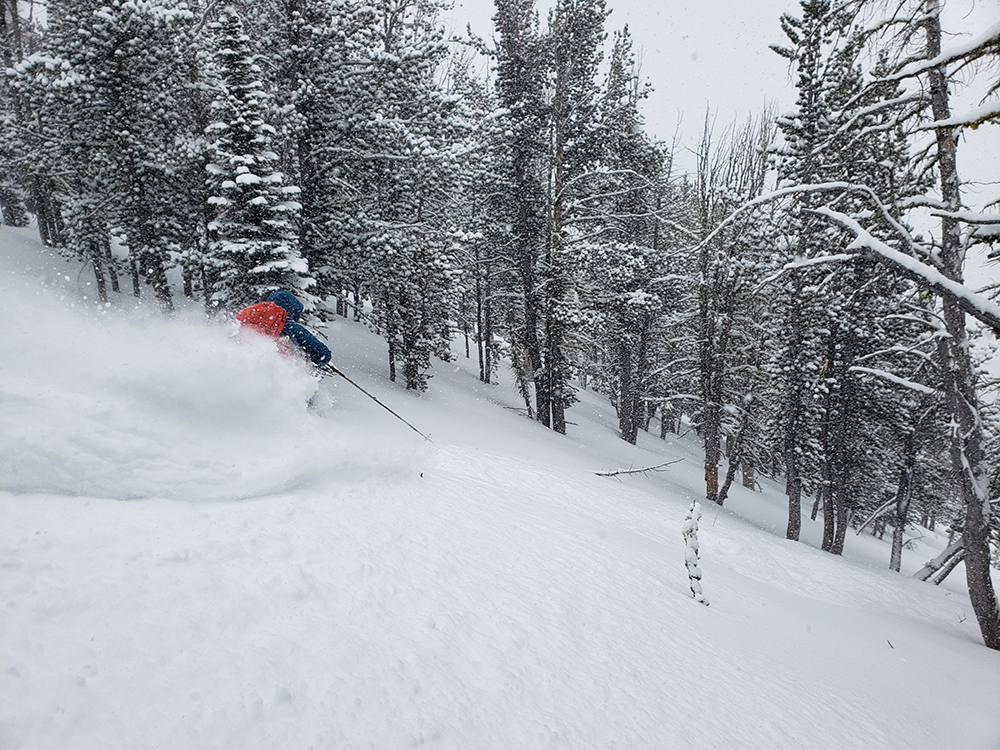
Back in Harrison, I contemplate the weekend. Over three days, I added a lot of tools to my toolbox, and I’m excited to carry this knowledge into future backcountry trips. It will help keep me and my ski partners safe, while enjoying a fun and fulfilling activity in the mountains of Montana—one that keeps my legs burning and my mind working. And I’m looking forward to continuing my education, with a rescue course to refine my search-and-recover skills. Stay tuned and stay safe out there.
Next up in the series: the author attends a rescue course, to improve her emergency-response skills.

